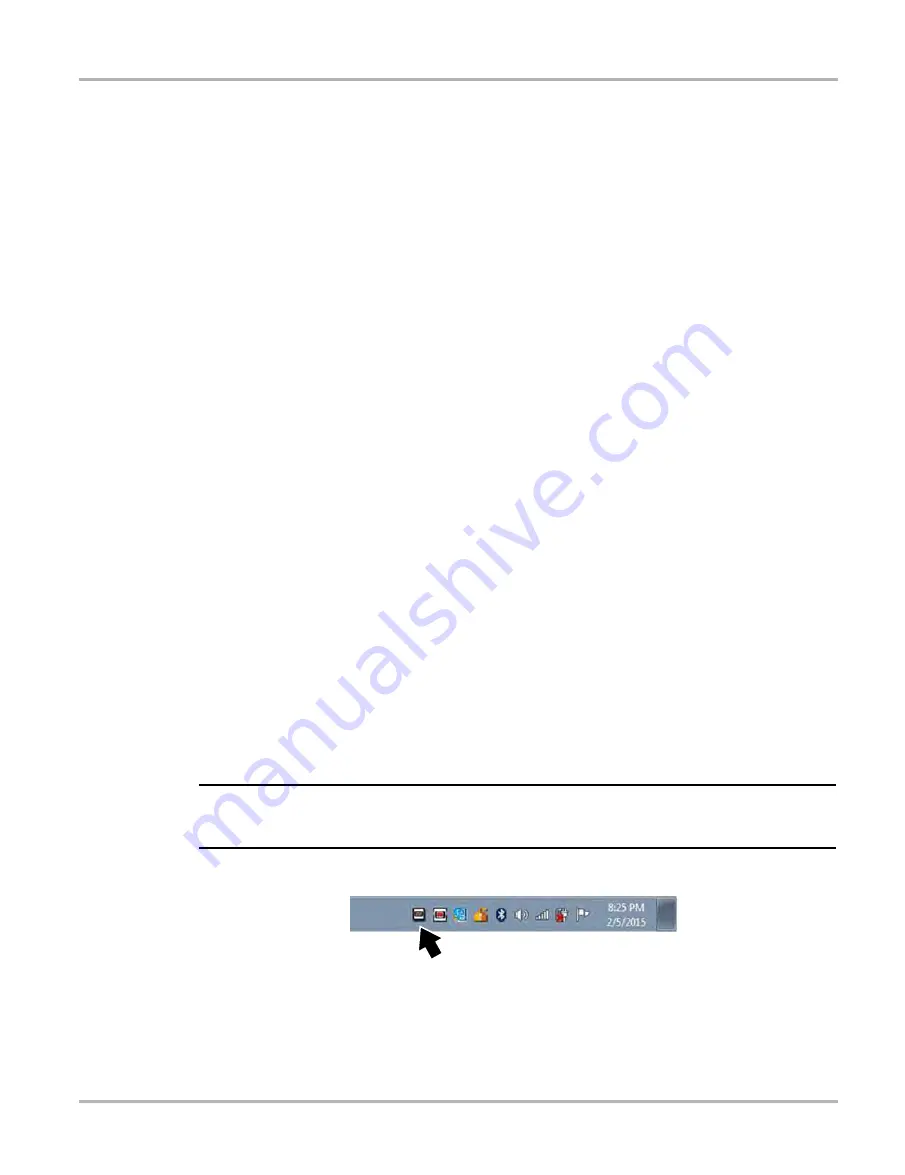
21
Basic Operation and Navigation
Virtual Keyboard
3.4.6 Windows Taskbar
The standard Windows taskbar displays program icons that are currently running or that you have
pinned to the taskbar for quick access. Refer to Microsoft Windows 7 user documentation for
additional information.
Windows Taskbar Notification Area
The notification area contains icons that provide active status and notifications of selected
programs. The notification area may contain standard Windows application icons (e.g. Wireless
Network Connection Status, Audio volume, etc) and specialized application icons designed for
use only on this Diagnostic Tool (e.g. ShopStream Update Tool and Virtual Keyboard). Refer to
Windows 7 user documentation for additional information for Windows applications. For additional
information on the ShopStream Update Tool and Virtual Keyboard, see:
ShopStream Update Tool
-
Virtual Keyboard
3.5 Virtual Keyboard
The Windows Touch Keyboard (Virtual Keyboard) allows you to type characters and key in
information to complete form and data entry fields, similar to a physical keyboard.
The virtual keyboard is normally running in the Windows background and can be opened in the
following ways:
•
Shortcut (S) button
- choose the
Virtual Keyboard
icon from the Shortcut (S) button menu
•
Windows notification area
- choose the
Virtual Keyboard
icon in the Windows notification
area
•
Docking area
- By default the virtual keyboard is docked (auto-hide) to the left side of the
screen. To access the virtual keyboard, swipe from the left edge of the screen to right
(centered top to bottom). A tab will appear on the edge of the screen. Swipe the tab again left
to right and the virtual keyboard will display.
NOTE:
i
As an alternative, you can connect a USB keyboard to the Diagnostic Tool and use it to key in
information.
Figure 3-5
Virtual Keyboard icon in notification area
To customize settings and find additional operational information, select
Tools
) to
open a dropdown menu to access optional settings and Help links.






























